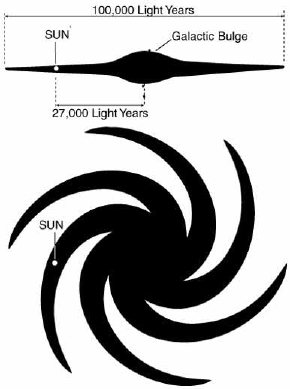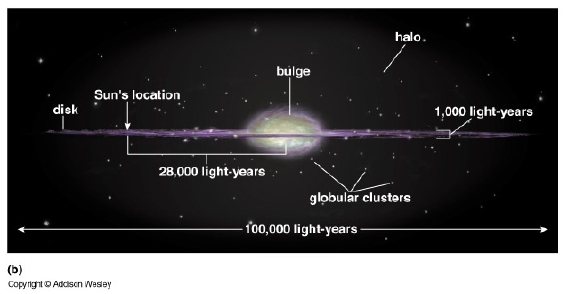and the position of our solar system.
(1 parsec = 3.26 light year)

Credit: Illustration by Tim Jones
image source: http://stardate.org/resources/gallery/gallery_detail.php?id=96
A schematic view of the Milky Way with its main component: the disk, the central bulge, the halo and the globular clusters.

Credit: Addison Wesley
image source:
http://people.brandeis.edu/~wardle/ch16/chapter-16.html